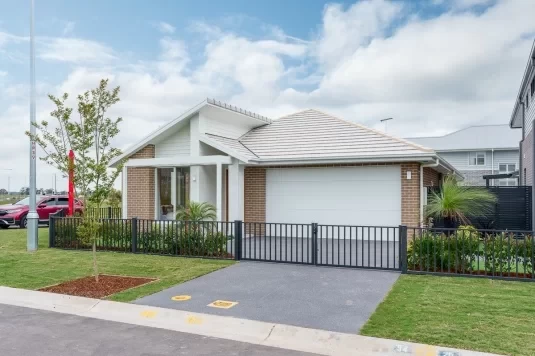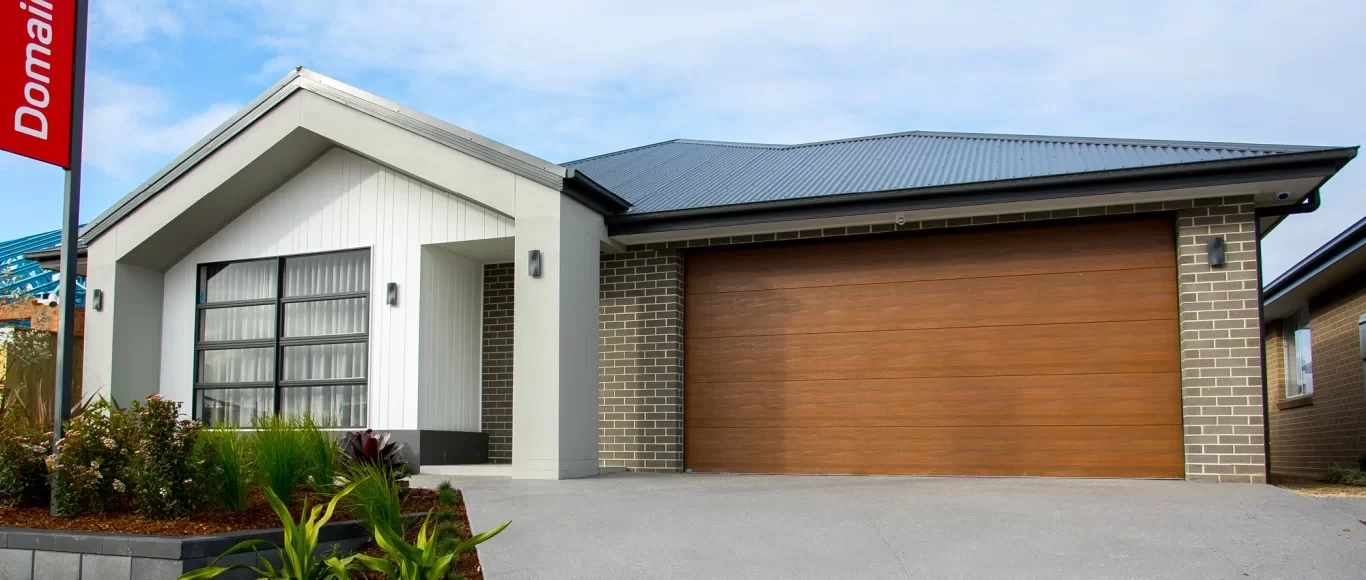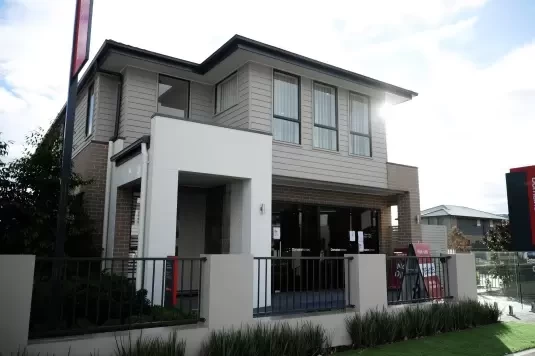Is Real Estate Investment Still a Good Bet in 2025 Australia? Here's Why
Think real estate is a simple win? Consider again. The market in 2025 Australia is set to test every assumption you hold. Yet, that’s what makes it a compelling investment option. In fact, there’s substantial potential for rewards if you’re informed about where to turn your attention and the actions to take. This article presents insights designed to transform your perspective on property investments in Australia today.
Picture yourself planning an investment in Sydney or Brisbane. These cities might be the first on your list, but what if I suggested that regional hotspots are where the real growth is blooming? When considering investment properties, a move towards sustainable homes is reshaping property preferences. Additionally, government initiatives are playing a pivotal role, changing the landscape with fresh tax benefits and foreign investment regulations.
Of course, it’s not straightforward. The risks are genuine. Economic shifts and rental market fluctuations pose notable challenges. However, with the appropriate strategies—like opting for emerging suburbs and obtaining low-interest loans—you can successfully navigate these uncertainties. Moreover, investment properties can generate passive income through rental income, providing consistent and reliable cash flow.
Last year, the property market witnessed changes, prominently towards sustainable living and technology integration. These trends aren’t diminishing; they’re only increasing in momentum. So, why should you place your bet on real estate in 2025? Because if you manoeuvre wisely, this investment can unlock your financial aspirations.
Ready to seize these opportunities? Stay with us for a comprehensive breakdown that could pave the path to your next significant real estate triumph.
Australian Real Estate Market Trends 2025: What's Working Now
-
Cities such as Sydney and Melbourne have experienced shifts in pricing, which significantly impacts property investment strategies. Investors need to consider these changes when evaluating the advantages and disadvantages of investing in these urban areas compared to regional areas.
-
There’s increasing interest in eco-friendly homes alongside a changing preference between apartments and detached houses.
-
New governmental policies highlight tax incentives and rules affecting international buyers.
Current Price Trends in Major Cities
Sydney, Melbourne, Brisbane: Recent Price Changes
Throughout 2024, Sydney’s property market witnessed a notable upward trajectory in prices. By September, Sydney’s median house price had ascended by 3.5% from the year’s onset. Melbourne mirrored this pattern with a 2.8% rise. Brisbane, too, saw an uptick, albeit at a gentler pace, with a 2.1% increase in median house prices over the same span. Factors like seasonal variations and global interest drove these changes. After a brief lull in winter, prices rejuvenated as summer neared. This momentum seems poised to continue as we move into 2025.
Looking forward, the potential for further price hikes in 2025 is pivotal. With heightened investments and robust demand, it’s probable that Sydney and Melbourne will experience further price inclines. Brisbane might also grow, though more moderately than these larger cities. As property prices rise, the impact on mortgage payments becomes significant. Higher property values can lead to increased mortgage payments, but the cash flow from rental payments can help offset these costs. Additionally, fixed-rate loans can mitigate the burden of monthly mortgage payments over time, especially as inflation reduces their real value.
Comparison of Urban vs. Regional Areas
While urban hubs flourish, regional zones paint a contrasting picture. Propelled by remote work capabilities, many buyers relocated to regional locales in 2024, causing a 4% price surge in regions like the Central Coast and Geelong. Some locales even garnered city-level real estate interest. However, toward the year’s close, demand seemed to stabilise. With regional transport enhancements planned for 2025, these areas might see steady demand but moderate price rises compared to urban areas.
As to whether property prices will dip, attention often pivots to these regional spaces. While some easing might occur, significant price drops aren’t anticipated unless an economic downturn ensues. The likelihood of such an event appears minimal given current forecasts. Investors considering direct ownership in these regions should weigh the potential for moderate price rises against the responsibilities and challenges that come with owning properties directly.
Types of Properties in Demand
Shift Towards Eco-Friendly Properties
In 2024, there was a clear upswing in demand for eco-friendly properties. This past year exhibited a substantial 10% rise in interest for homes boasting sustainable features. Among the most sought-after were solar panels, advanced insulation, and water-conserving technologies. This demand is driven by both personal values and governmental support. With new government plans promoting green living, the allure of such homes persists.
For 2025, investing in eco-friendly properties is a wise strategy. The market for sustainable homes continues to expand. With ongoing climate concerns, the value of homes with green certifications is likely to increase. Additionally, effective management of maintenance costs in these properties can maximize income and offset other expenses such as mortgage payments.
Popularity of Apartment vs. Detached Houses
Throughout the year, there was a noticeable shift in preferences between apartments and standalone houses. Apartment sales realised a 6% uptick as urban living regained its appeal post-pandemic. Conversely, detached houses saw consistent demand due to their attraction to families and investors. Factors like cost-effectiveness and urban lifestyle guided these trends.
As we venture into 2025, apartments might continue to gain favour as more individuals seek convenience and cost-efficiency. Detached houses will remain appealing, especially those with larger plots. For prospective buyers, balancing investments between these property types could yield benefits.
Government Policies Influencing the Market
Impact of Recent Tax Incentives and Capital Gains Tax
In early 2024, the government rolled out key tax incentives designed to spur the housing market. These included a 5% cut in stamp duty for first-time buyers, which led to a 15% rise in first-time buyer involvement by mid-year. Additionally, a new tax credit for retrofitting energy-efficient homes was introduced. This credit is likely to endure, encouraging more homeowners to enhance their properties with energy-saving upgrades in 2025.
The measures from last year indicate that leveraging these incentives to claim tax deductions is advantageous. Homebuyers and investors should keep an eye on potential extensions or new incentives in 2025, which could benefit those planning purchases or upgrades.
Regulations Affecting Foreign Investments
In 2024, policies concerning international buyers became more stringent with tighter scrutiny and additional fees. Initially, this led to a mild decrease in overseas investments. However, strong economic performance and attractive returns sustained foreign interest. By December, non-resident investment in commercial properties saw a 7% rise.
Looking to 2025's atmosphere, it's crucial to recognise that foreign investments might undergo further regulatory evaluations. Those contemplating overseas investments should remain apprised of these regulations and associated costs to ensure an informed market entry.
Investing in Australian Property 2025: Smart Strategies
-
Uncover potential in up-and-coming suburbs.
-
Capitalise on better financing options as interest rates fall.
-
Be mindful of economic factors and evolving market conditions.
1. Choosing the Right Location
In 2025, turning your eyes to emerging suburbs and regional areas could unlock incredible investment opportunities in investment property. These regions shine with growth potential, offering affordability and a lifestyle allure. Notably, regional areas registered a 4% price increase in 2024, partly due to the rise of remote work.
Conversely, the risks in over-crowded urban markets shouldn’t be underestimated. High property prices and limited growth potential can be hurdles. For example, Sydney’s 3.5% price rise in 2024 emphasises this. Yet, opportunities might still be found based on specific local factors like infrastructure upgrades or proximity to workplace hubs.
-
**[Action Items]**1. Investigate local council plans for infrastructure projects, like upcoming schools or transport links.
-
Assess suburban locations with rising housing demand, especially those near new commercial zones.
2. Financing Your Investment
With 2025 expected to usher in declining interest rates, it’s a prime moment to secure competitive loan terms. The “RBA is anticipated to cut rates starting in February,” implying current mortgage acquisitions could lead to cost savings down the line, as noted by Paul Ryan at REA Group. Moreover, the slower rental growth rate compared to incomes improves the financing landscape for investors.
Exploring creative financing alternatives expands purchasing power, introducing options such as rent-to-own schemes or partnerships with fellow investors. These options are advantageous for those who might face challenges obtaining conventional loans. However, it's important to consider the potential capital gains tax implications of these alternatives. Investors may be subject to capital gains tax in addition to income tax on dividends, depending on the structure of their investment vehicles. Engaging with financial planners can illuminate innovative lending paths tailored to your property goals and help navigate the tax landscape.
-
**[Action Items]**1. Explore various mortgage offers that emphasise flexibility.
-
Pursue collaborations with dependable investors to combine resources.
3. Risks to Consider
Economic evolutions wield substantial influence over property ventures. As Aaron Scott suggests, relying on past trends without scrutiny is precarious. Be vigilant about policy shifts like migration changes that could sway market demands. Such transformations can redraft property landscapes, benefiting certain areas while disadvantaging others. Rotational policy changes may trigger an influx or exit of home seekers.
Rental market complexities also merit attention. Variables in demand could suppress rental yields, impacting revenue streams and ultimately affecting your taxable income. Overhead supply, without matched demand growth, may lower rental returns in specific locales, which can reduce your taxable income but also offer opportunities for tax deductions. Keeping a pulse on economic indicators such as job rates and housing trends strengthens decision-making.
-
**[Action Items]**1. Monitor national and local housing policies influencing market dynamics.
-
Stay tuned to broader economic cues like unemployment that could affect real estate trends.
Consulting with a financial advisor before making property investments is essential to navigate these varied factors effectively.
Trends from Last Year: 2024 Recap and Changes
-
Green homes surged in popularity while co-living spaces rapidly caught on.
-
Real estate adopted virtual tours and embraced AI technology.
-
Economic dynamics created a vibrant, if complex, market landscape.
Major Shifts in Buyer Preferences
Increased Interest in Sustainable Homes
Throughout 2024, sustainable homes carved a niche in Australian real estate. Buyers increasingly leaned towards properties brimming with energy-efficient features. A combination of factors fuelled this trend. Environmental awareness and attractive government incentives were pivotal. Policies encouraging eco-friendly construction and energy-saving measures swayed decisions. According to Lawrence Yun, NAR’s Chief Economist, the economy’s upswing catalysed buyer activity. As employment figures climbed, sustainable options attracted more interest. This wasn’t a fleeting trend; it became ingrained as consumers aimed to reduce carbon footprints. With 2025 on the horizon, investing in sustainable homes might not just be wise, but an imperative step. Ongoing governmental backing suggests demand will remain strong, and achieving capital growth through these investments is a significant financial benefit.
Growth of Co-Living Spaces Popularity
In 2024, co-living spaces garnered enthusiasm and new advocates. These shared living arrangements won over young professionals and students alike, sparking interest. The charm lies in their affordability and adaptability. Urban centres experienced the most substantial growth due to steep real estate prices. Major cities, grappling with housing supply challenges, benefited from this shift. Renters found the cost savings and community vibes appealing in co-living. By the year's midpoint, urban planners viewed these spaces as effective responses to housing dilemmas. Looking ahead, co-living’s popularity is expected to endure. Investors can explore prospects in developing or transforming properties for shared occupancy.
Technology Integration in Real Estate
Role of Virtual Tours and AI in Purchasing Decisions
Technology took centre stage in real estate decision-making in 2024. Virtual tours and AI became trusted guides for numerous buyers. Virtual tours simplified property viewing, bringing convenience to busy professionals and distant buyers alike. AI enriched the process by delivering tailored recommendations and insights on property features. As the year advanced, these technologies wielded growing influence. JLL’s Global Survey suggests AI will continue reshaping real estate dramatically in the coming years. For industry players, embracing these advancements can mean staying competitive and ahead of the curve.
Additionally, real estate investment trusts (REITs) have emerged as an alternative investment vehicle, leveraging technology to offer individuals access to real estate assets without the responsibilities of direct property ownership. REITs provide liquidity and potential for higher dividends, diversifying an investor's portfolio through managed, pooled investments in various property types.
Economic Influences on the Market
Effects of 2024 GDP Growth on Property Values
Australia's economic health was closely tied to real estate dynamics in 2024. Rising GDP empowered consumer confidence, buoying property values. Urban locales felt these effects profoundly, with demand and activity surging. Yet, as prices escalated, some potential buyers found themselves edged out. Investing wisely in burgeoning suburbs emerged as a savvy alternative. As 2025 dawns, monitoring economic indicators like GDP growth and unemployment trends will be key. These elements will continue shaping property values and affecting buyer capacity.
Unemployment Trends Impacting Buying Power
Unemployment trends mirrored real estate sector dynamics in 2024. Early in the year, unemployment dipped, fuelling buyer activity and optimism. This momentum spurred home purchases. As the year waned, global economic uncertainties surfaced, hinting at potential instability in 2025. Rising unemployment could dampen buyer confidence. Thus, staying informed and adaptable will be essential for investors considering the real estate market in the upcoming months.
Future of Real Estate Investment in Australia: Looking Ahead
-
Australia’s GDP growth and employment shifts will shape the market landscape.
-
Urban and rural areas will have distinct reactions in 2025.
-
Timing is your ultimate tool for maximising returns.
Forecasted Economic Developments
Expected GDP Growth and Its Impact on Real Estate
Australia’s GDP is set to grow steadily in 2025, driving real estate markets upward. A robust GDP often signifies more jobs and increased consumer income, enhancing borrowing potential and property purchases. This trend hints at rising property demand, especially in city hubs where employment is concentrated. For those considering real estate investments, this growth presents opportunities for steady income through rental payments and potential capital appreciation. However, while growth can spur markets, there’s a flipside: unchecked growth might lead to real estate bubbles and volatility. It’s a double-edged sword that investors should consider. Dive into “Australia’s Economy in its International Context: The Joseph Fisher Lectures” for an in-depth look at economic impacts on property markets.
Predicted Unemployment Rate Changes
Australia's unemployment rate is expected to stay low, around 4.1%, supporting stable consumer confidence. A reliable job market keeps buyers optimistic, but any downturn can ripple into reduced property demand. Historical patterns show that unemployment is a crucial, though sometimes underestimated, indicator of market change. Investors should keep a close watch on employment figures for strategic decision-making. "The Australian Economy: Success Stories and Disaster Zones" provides a detailed look at how employment trends influence markets.
Housing Market Predictions Australia 2025
Predicted Market Stability for Urban vs Rural Areas
National house prices are projected to climb by 3.3%, with an impressive 6% rise expected in 2026. Urban centres like Perth may see house prices jump around 4%, driven by their appeal as job magnets. While urban areas promise higher potential returns, rural zones offer a stable investment base with less volatility. As a physical asset, rural real estate provides investors with tangible investments they can see and manage, offering a sense of security and control. Historical trends could illuminate these choices. Explore “Urban Economics: A Global Perspective” for a deeper understanding of urban market dynamics.
Insights into the Rental Market Dynamics
As house prices rise, rental rates often follow suit, with mid-3% to mid-4% growth predicted through 2025 and 2026. This stable rental yield is attractive for long-term income-focused investors, though they must remain cautious of possible oversupply in certain areas. A nuanced strategy is vital, as markets can fluctuate unexpectedly. For wider context, "The Rental Market in Australia: Economic Analysis" is an excellent resource.
Maximising Opportunities in 2025
Timing Your Purchase for the Best Returns
Anticipated interest rate cuts in 2025 may unlock more favourable conditions for buyers. Lower rates can simplify borrowing, aligning with these shifts can optimise returns and secure long-term gains. Yet, timing is everything; missing the optimal moment could lead to higher costs and reduced benefits. Tracking annual or seasonal trends could open strategic opportunities.
Long-term Investment vs. Short-term Flipping
Opting for long-term investments can yield consistent and steady profits, aligning with expected economic growth. In contrast, short-term flipping can offer quick gains but comes with risks in challenging economic conditions. Employing a balanced strategy to manage risks could prove advantageous. Gain insights from "Real Estate Investing For Dummies" for varied and adaptable strategies.
What is Real Estate Investment in Australia?
Basic Overview of the Investment Process
In Australia, real estate investment involves acquiring residential or commercial properties, either outright or via mortgages. Real estate is considered a tangible asset, providing comfort and security that comes from owning a physical property. Key to the process is financing — options range from personal loans to intricate structures like self-managed super funds (SMSFs). Understanding these can greatly enhance investment outcomes. Each financing option has its own tax implications, legal frameworks, and potential drawbacks, which should be carefully considered. “Australian Real Estate Investing: Define Your Model, Develop Your Success” provides comprehensive insights into these distinctions.
Key Differences Between Residential and Commercial Properties and Real Estate Investment Trusts
-
Residential Properties: Comprising houses, apartments, and townhouses, these are preferred for long-term capital growth and steady rental income. They come with lower risks but typically offer slower returns.
-
Commercial Properties: These include offices and retail spaces, promising higher returns but with greater risk due to larger investments and possible extended vacancy periods. They are closely tied to business cycles, necessitating awareness of market trends.
Understanding these differences enables investors to tailor their strategies to achieve personal or business goals. For more depth, consider academic works like "Commercial Real Estate Analysis and Investments."
Australia’s real estate market holds potential for rewarding returns and substantial growth, provided investors navigate its complexities knowledgeably. Armed with comprehensive data, insights, and strategies, you can make informed decisions that capture the opportunities the market offers.
Conclusion
As we journey into 2025, it's evident that Australia's real estate market still offers immense potential for those wanting to invest strategically. Examining pricing patterns in leading cities reveals ripe opportunities, particularly in eco-friendly and regional projects. The emergence of sustainable housing and shifting government policies presents an exciting new vista for discerning investors.
We've explored the risks, from economic transitions to fluctuations in the rental market. The allure is in the strategies available to navigate these—choosing the ideal locations and leveraging innovative financing methods. It's not merely about surviving in 2025's market; it's about excelling.
Consider the insights you've uncovered: fresh trends, savvy strategies, and economic predictions. No longer are you just pondering if real estate is a wise investment in Australia in 2025; you're now ready to invest confidently.
The road ahead is clear. Will you take the step and embrace the opportunities awaiting you? Your real estate adventure progresses, promising growth and evolution. The future of real estate is for those prepared to craft it. Are you among them?








